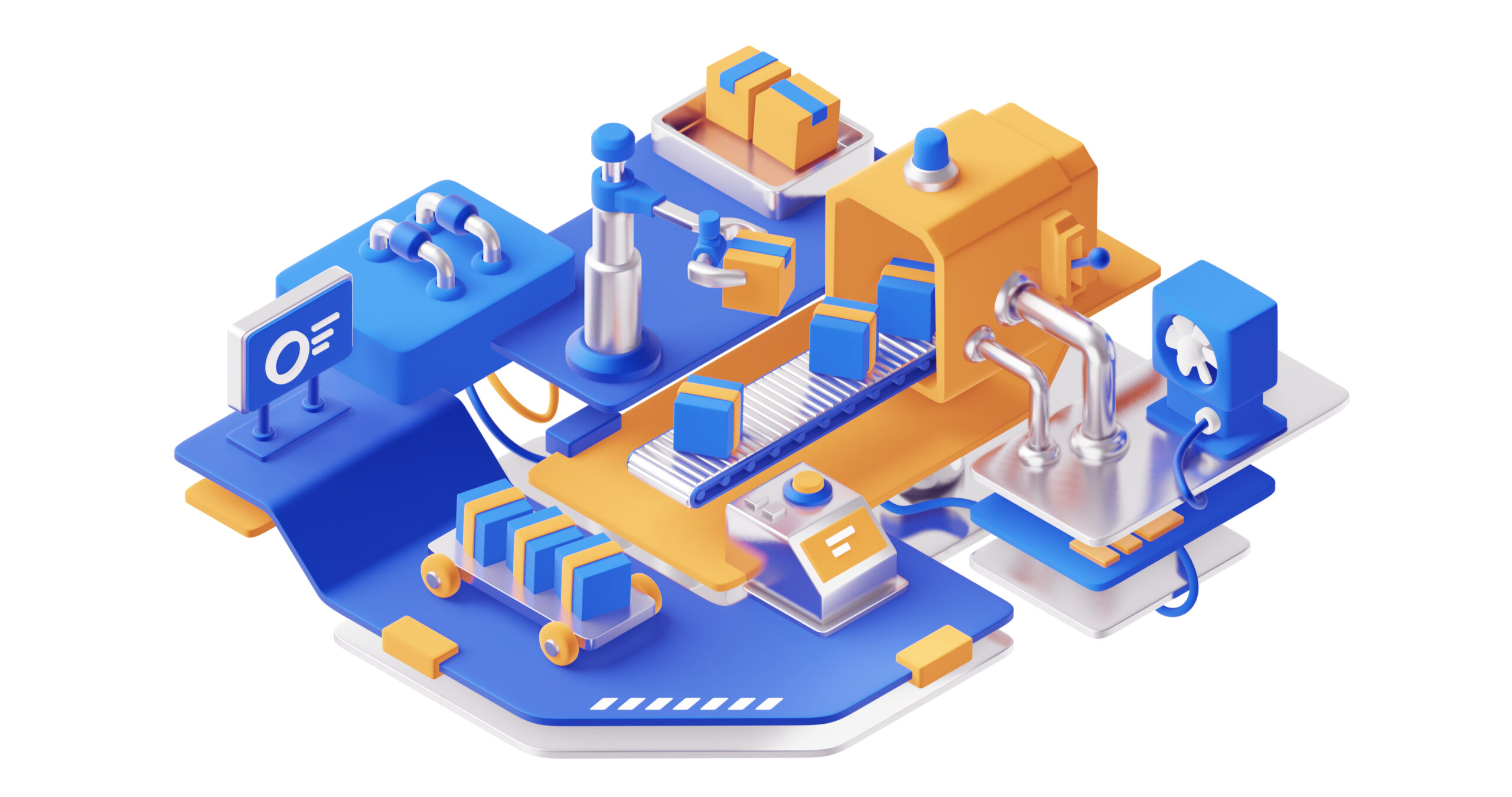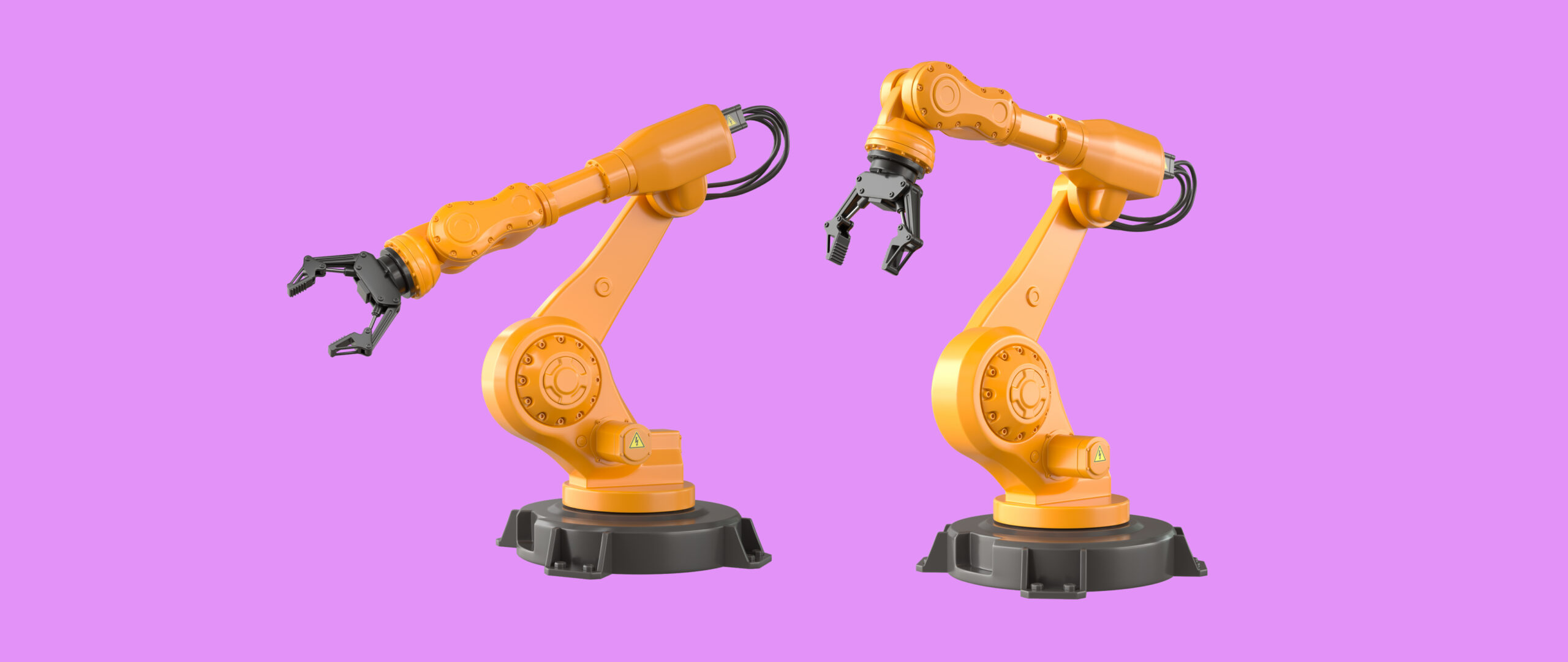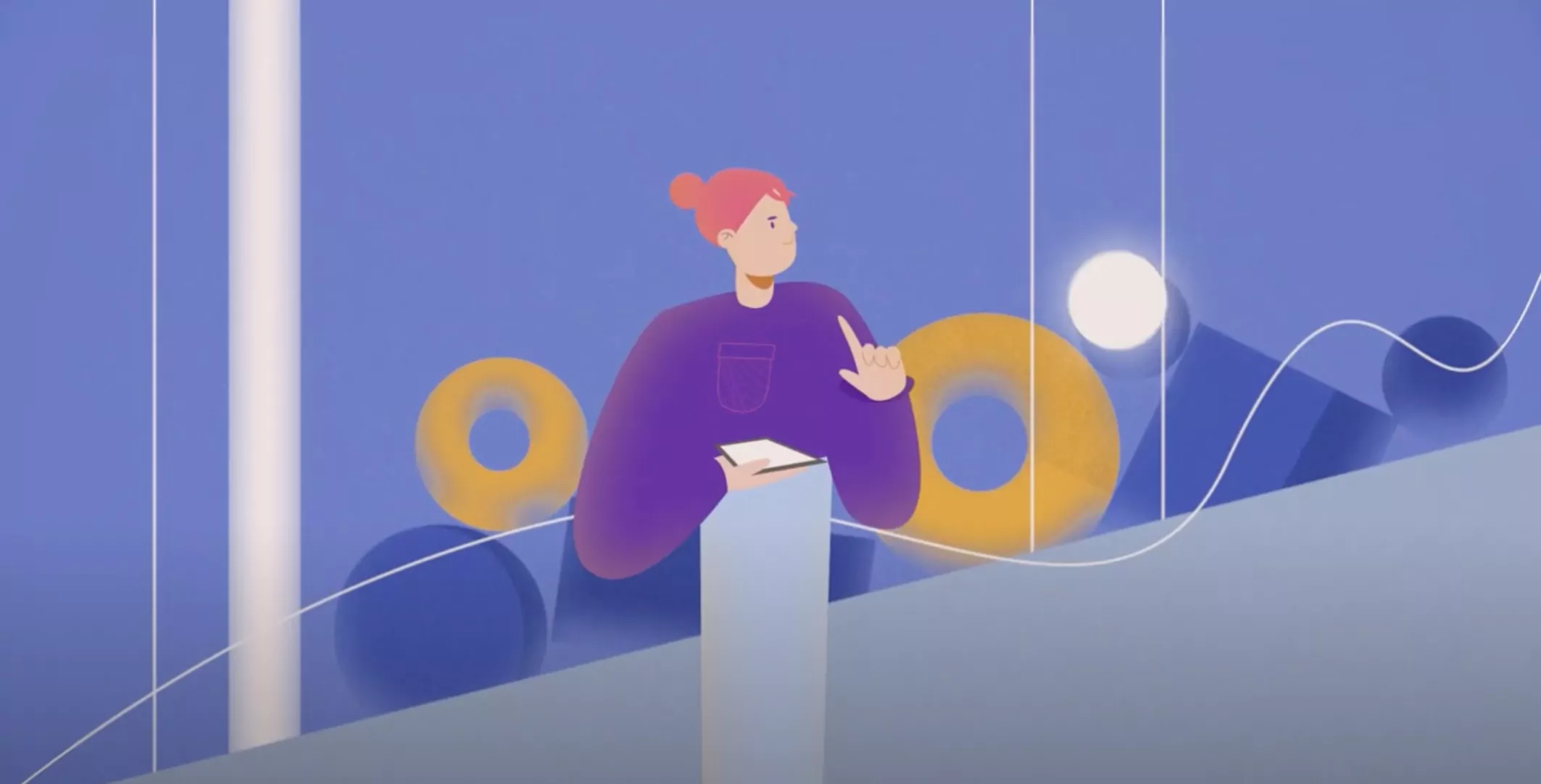3D explainer videos can reduce costs, increase efficiency, and allow for flexible adjustments. Companies can present their products in more detail and with greater clarity, strengthening customer engagement. In this article, we explain why businesses are switching to 3D visualizations and the benefits they offer.
Challenges of Traditional Product Presentations in the Industrial Sector
Traditional product presentations in the industrial sector often come with significant challenges. High costs and logistical complexity make it difficult to showcase products efficiently. Venues must be booked, booths set up, and products transported — an expensive and time-consuming process. These factors limit flexibility, making it nearly impossible to implement last-minute changes or cater to specific customer needs.
In recent years, many trade shows and events have been canceled, further increasing the demand for virtual product presentations. Companies had to quickly transition to digital alternatives to meet their marketing goals and continue showcasing their products to potential customers. This shift has highlighted the limitations of traditional methods, proving they are often no longer sufficient for today’s business demands.
These challenges have led businesses to seek digital alternatives. The need to reduce costs while remaining flexible and adaptable has paved the way for innovative solutions such as 3D visualizations and animations.
Why Companies Are Turning to Digital Alternatives
Digital technologies offer numerous advantages that traditional methods simply cannot match. By leveraging 3D technology, companies can create more effective and efficient marketing content, significantly reducing advertising costs. These technologies allow businesses to showcase products from various angles and illustrate complex functions in a clear and engaging way. This differentiation helps companies stand out from the competition and strengthen their market presence.
Another key reason for shifting to digital alternatives is improved SEO optimization. High-quality 3D content increases user engagement and dwell time on websites, positively impacting search engine rankings. This means potential customers stay on the site longer, engage more deeply with the products, and ultimately drive higher conversion rates. Beyond cost efficiency and SEO benefits, digital technologies offer rapid content adjustments, sustainable practices, and greater flexibility. Businesses can swiftly adapt their B2B marketing strategies to changing market conditions and update their content without requiring large investments. This not only boosts efficiency but also enhances the relevance of marketing materials.
Benefits of 3D Visualizations and Animations
3D visualizations and animations offer numerous advantages that traditional methods simply cannot match. Professional product videos can highlight the practical benefits of a product and are more effective from a marketing perspective than static images or text. This type of product presentation, which showcases items from all angles, helps attract and retain customers by providing an impressive visual experience. Such a video can be particularly engaging.
The benefits of 3D animations are extensive, ranging from cost efficiency and flexibility to diverse application possibilities:
Cost Efficiency of 3D Explainer Videos
One of the biggest strengths of 3D explainer videos is their cost efficiency. By using 3D animations, companies can demonstrate products without having to create physical prototypes. This not only saves material and shipping costs but also significantly reduces logistical efforts.
Additionally, modifying and updating 3D videos is simple, leading to further long-term cost savings. Companies can quickly and easily adjust their product presentations as needed without incurring high costs for new prototypes or marketing materials.
The cost efficiency of 3D explainer videos includes savings on materials, shipping, and setup. These savings make 3D visualizations a financially attractive alternative to traditional product presentations, helping businesses optimize their budgets.
Flexibility and Adaptability of 3D Videos
Another key advantage of 3D videos is their flexibility. Companies can quickly adjust their product presentations whenever changes occur. This is especially important in a dynamic market environment where requirements and specifications frequently evolve.
The digital workflow of 3D renderings allows for modifications to camera angles, lighting, or product details at any time. This provides businesses with the ability to continuously enhance the quality of their presentations and tailor them to their target audience’s needs.
Additionally, leveraging web technologies in digital presentations further enhances flexibility, as content can be easily managed through content management systems (CMS).
Diverse Applications of 3D Videos
3D videos offer a wide range of applications that go beyond traditional product presentations. Virtual presentations enable effective engagement with both new and existing customers, especially in situations where in-person interactions are limited, such as remote work.
In architecture, 3D animations help visualize projects before construction begins. Additionally, 3D videos can be used across various platforms, including websites, presentations, and social media, increasing their reach and flexibility.
Practical Applications of 3D Explainer Videos in Mechanical Engineering
In mechanical engineering, 3D explainer videos provide a visually engaging way to convey complex information and streamline decision-making processes. Technical 3D animations can enhance customer interest by clearly showcasing the functions and benefits of products.
Another major advantage is the ability to visualize hidden process steps, improving comprehension of workflows. Transparent representations or exploded views highlighting individual components can be created using 3D animations. This makes complex technical operations easier to understand and supports informed decision-making.
In machine and plant engineering, components are visualized through photorealistic 3D images and animations, enabling technically precise and visually compelling product presentations. This not only improves customer understanding but also strengthens trust in the offered solutions.

Increased Customer Engagement Through Interactive 3D Representations
Interactive 3D models provide a more immersive experience than traditional images, allowing users to view products from all angles and better understand their features. This type of presentation boosts engagement and increases the time users spend on product pages, ultimately raising the likelihood of a purchase.
Integrating augmented reality (AR) with 3D models further enhances the shopping experience by letting customers see how products would look in their real environment. Additionally, interactive 3D models enable real-time customization, allowing customers to personalize products to their preferences — especially valuable in industries like automotive and fashion.
This innovative use of 3D visualizations also provides valuable insights into user behavior, which can be leveraged to refine marketing strategies and optimize product offerings.
Environmental Friendliness and Sustainability
The production of 3D explainer videos can be made sustainable by reusing materials multiple times. Companies can effectively communicate their sustainability efforts through well-produced explainer videos. This allows complex topics like sustainability to be presented in an engaging way, making the message more accessible. Explainer videos can showcase a company’s sustainable initiatives and also serve as e-learning tools. Strategically planning the use of explainer videos increases their longevity and efficiency in corporate communications. Explainer videos remain an essential medium in today’s digital landscape.
Future Trends: The Role of 3D Visualizations in the Industrial Sector
3D visualizations are becoming essential components in the transition to Industry 5.0, playing a key role in promoting sustainability and resilience. A central aspect of this development is digital twin technology. A digital twin is a precise virtual representation of a physical object, process, or system.
By integrating the digital and physical worlds, digital twins enable real-time monitoring, analysis, and optimization of operational processes. This is achieved by continuously collecting and analyzing data from the physical counterpart. As a result, companies can identify potential issues early, plan maintenance proactively, and improve efficiency — making digital twins a true game changer in the industry.
Future advancements in 3D visualization will focus on enhancing collaboration between humans and machines while increasing operational efficiency. The integration of Augmented Reality (AR) with digital twins will further improve interaction in industrial applications. With AR, operators and engineers can leverage immersive and interactive experiences to plan, monitor, and maintain complex systems more effectively.
Integration of 3D Videos into Your Marketing Strategy
Integrating 3D technologies into marketing allows companies to create emotional brand experiences that resonate with potential customers. 3D renderings and animations can be used to tell a brand’s story, fostering a deeper connection with the audience.
By presenting products in a visually impressive and interactive way, businesses can communicate their messages clearly and impactfully. With the right partner and strategic steps, integrating 3D renderings into a marketing strategy can be both effective and efficient.
Conclusion
3D explainer videos are the ideal solution for product presentations in the industrial sector due to their cost efficiency, flexibility, and diverse applications. They provide an impressive visual representation that clearly conveys technical details, strengthening customer trust. Additionally, interactive 3D models enhance customer engagement and offer valuable data for optimizing marketing strategies.
Companies that integrate these technologies into their marketing strategies can strengthen their market presence and stand out from the competition. The sustainable production and use of 3D visualizations also contribute to environmentally friendly corporate communication. The future of product presentation lies in the further development and integration of 3D technologies, which will enhance both efficiency and innovation for businesses.
Frequently Asked Questions
What are the main advantages of 3D explainer videos?
The main advantages of 3D explainer videos include cost efficiency, flexible adaptability, and diverse applications. They are an effective way to present complex information in an engaging manner.
How do 3D visualizations contribute to sustainability?
3D visualizations support sustainability by reducing material and shipping costs while promoting environmentally friendly corporate communication.
Which industries benefit the most from 3D animations?
Industries such as mechanical engineering, architecture, and the automotive sector benefit the most from 3D animations, as they enhance design, presentation, and prototype development.
How do 3D videos improve customer engagement?
3D videos enhance customer engagement through interactive models that create an immersive experience, increasing user interaction and time spent on content.
What are the future trends in 3D visualization?
Future trends in 3D visualization include the integration of augmented reality and digital twins, significantly improving interaction and efficiency in industrial applications. These technologies enable a more realistic and interactive use of 3D models.




